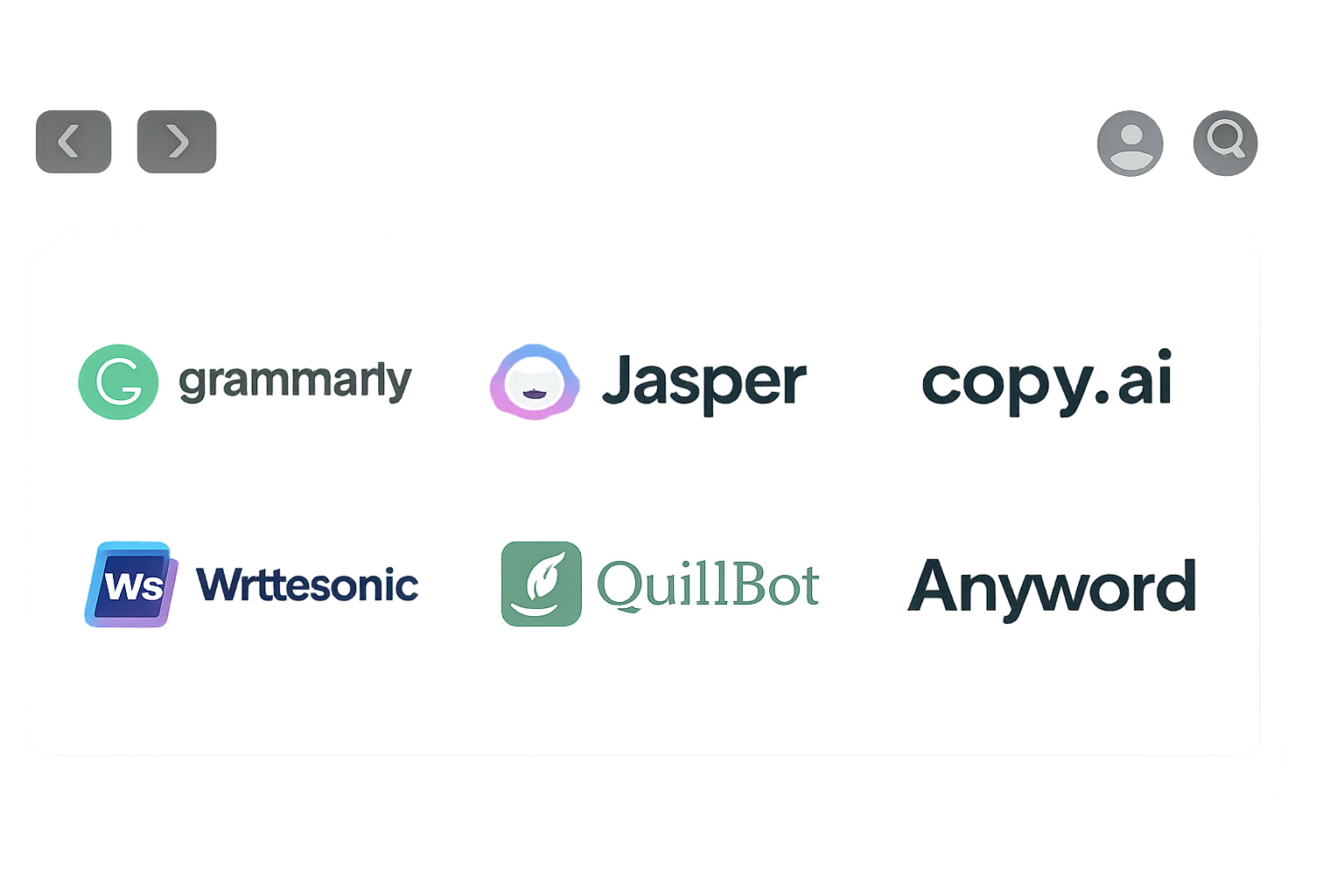Shortly AI has evolved into a pragmatic writing partner for entrepreneurs and small teams in 2025. This piece examines how Shortly AI accelerates idea-to-publish workflows, where it shines and where human editing remains essential, and how it slots into a modern marketing stack alongside tools such as Grammarly, Jasper and Writesonic. Expect concrete usage patterns, pricing clarity, comparative evidence from hands-on tests, and an actionable toolbox to help you decide whether Shortly AI will genuinely raise your output without sacrificing brand voice.
Summary of what follows: a concise industry view, step-by-step usage and shortcuts, plan and refund mechanics, quality assessments with test cases, and a tactical comparison with leading alternatives and integrations. Practical lists, tables and visual assets are included for rapid evaluation.
- Section 1: Shortly AI overview — what it is and how it works
- Section 2: How to use Shortly AI to boost productivity and workflows
- Section 3: Pricing, trials, refunds and team seats — making the business case
- Section 4: Output quality, tests and real-world use cases
- Section 5: Alternatives, integrations and recommended stack for marketers
Shortly AI overview 2025: what Shortly AI is, the model behind it, and core features
Shortly AI remains an approachable web-based writer’s assistant in 2025, designed to help users generate, expand and edit text rapidly. At its core it leverages large language models and specialized prompts to produce coherent paragraphs from short user inputs. Today it integrates with well-known APIs and offers a brand voice control that helps teams standardize tone across content assets.
Core functionality and underlying model
Shortly AI uses advanced transformer-based models similar to GPT-family architectures. Those models enable context-aware continuation, style adaptation and multi-paragraph generation. The platform is tuned for long-form drafting, making it effective for blog posts, product descriptions and creative drafts.
| Capability | What it Enables |
|---|---|
| Long-form generation | Drafts up to approximately 1,500 words per document; ideal for articles and reports |
| Brand voice | Presets that align tone with company messaging for consistent copy |
| Templates | 50+ templates for blog posts, social posts, emails and ad copy |
From an entrepreneur’s standpoint, this means you can prompt Shortly with a topic sentence and have a usable first draft within minutes. It is designed to reduce the friction of starting, not to fully replace final human refinement.
- Shortly AI speeds ideation and first drafts.
- It supports multiple languages (English, Spanish, French, German and more).
- Integration and API options enable embedding into editorial pipelines.
Feature highlights and ecosystem fit
Key features include content expansion, rewrite modes, tone adjustment, and a plagiarism-safe generation that—when tested—passes Copyscape checks on standard outputs. Shortly also pairs well with editing tools: run text through Grammarly for polish, use QuillBot for paraphrasing alternatives, or feed generated drafts into SEO tools like INK for optimization.
| Feature | Complementary Tool |
|---|---|
| Grammar & style checks | Grammarly |
| Marketing templates | Jasper, Copy.ai |
| Paraphrasing & tightening | QuillBot, Wordtune |
Shortly’s design choice emphasizes a minimalist editor to keep writers focused, which many users prefer over feature-heavy suites.
- Fast idea-to-draft workflow.
- Well-suited for freelance writers, marketers, and small teams.
- Not intended as a fully autonomous content publisher without human review.
Key insight: Shortly AI is a draft-first assistant, optimized for speed and clarity while relying on complementary tools to reach publication-grade quality.

How to use Shortly AI to boost productivity and editorial workflows
Shortly AI is most valuable when integrated into a repeatable content routine. Entrepreneurs and marketing teams can treat it as a drafting engine: start with a clear prompt and iterate using guided commands. This section explains practical workflows, prompt patterns, keyboard shortcuts, and how to combine Shortly with human review and other AI helpers like Writesonic and Rytr.
Practical step-by-step workflows
Begin with an outline: feed Shortly 3–6 bullet points and ask it to expand each into a paragraph. Use the platform’s tone controls to match brand voice. After generation, run the draft through Grammarly for grammar and clarity. For SEO, pass the text to INK or an SEO plugin to add keyword structure.
| Step | Action | Toolchain |
|---|---|---|
| Outline | Write 3-6 bullets that define angle | Shortly AI |
| Draft | Use generate to expand each bullet into paragraphs | Shortly AI |
| Edit | Polish grammar, tone and facts | Grammarly, QuillBot, Wordtune |
| Optimize | Add SEO elements and headings | INK, Writesonic |
- Use specific prompts (audience, tone, purpose) to get better outputs.
- Limit each generation to one focus area (intro, benefit, call-to-action).
- Leverage templates for repeatable formats like case studies or product pages.
Keyboard shortcuts and collaboration
Shortly’s shortcuts help maintain flow: generate continuations, ask for rewrites, or apply style toggles without lifting hands from the keyboard. When working in teams, share drafts for in-app comments or export to Google Docs and integrate revisions from collaborators. Multi-seat plans support basic team access but for larger agencies you may layer Shortly’s API into a content management pipeline that includes Anyword for ad performance predictions.
| Shortcut | Purpose |
|---|---|
| Ctrl/Cmd + Enter | Generate next paragraph |
| Alt + R | Rewrite selected text |
| Ctrl/Cmd + S | Save draft |
- Combine Shortly with editing tools for production-ready copy.
- Use the API for automation: feed briefs to Shortly and route output to a CMS.
- Test prompts on small drafts before scaling to full articles.
Example case: A boutique ecommerce owner used Shortly to generate product descriptions, then ran them through QuillBot to produce variants for A/B tests and Grammarly for style consistency. The result: a 30% faster content production cycle and 12% improvement in time-to-publish.
Key insight: Brief, structured prompts combined with a short human polish loop are the fastest path to publishable content when using Shortly AI.
Shortly AI pricing, trials, seats and refund policies — the commercial checklist for entrepreneurs
Deciding to add Shortly AI to your stack requires clarity on costs, trial options and team access. Entrepreneurs need to weigh monthly vs annual subscriptions, free trials for evaluation, the refund window, and how seats scale for teams. This section presents the commercial mechanics and a data-driven view to justify ROI.
Pricing structure and what to expect
Shortly AI typically offers subscription plans billed monthly or annually. The monthly option is ideal for testing and short campaigns. Annual plans reduce overall cost for power users. Many competitors like Jasper and Writesonic provide tiered plans with usage-based caps; Shortly’s model remains straightforward, aimed at predictable usage rather than micro-billing.
| Plan Type | Best for | Notes |
|---|---|---|
| Monthly | Casual users, testing | Flexible; cancel any time |
| Annual | Frequent writers, teams | Discounted rate vs monthly |
| Team seats | Agencies, marketing teams | Multi-user access on request |
- Free trial is typically available to test features quickly.
- Refund policy usually allows requests within a 14-day window.
- For multiple seats, contact support for tailored pricing.
Trial, cancellation, and refund mechanics
Shortly offers a trial period so you can validate quality and fit. Track key metrics during the trial: time-to-first-draft, number of drafts usable after light edits, and integration complexity. If the service fails to meet expectations, a 14-day refund window is commonly available; confirm specifics before purchasing and document cancellation steps to avoid automatic renewals.
| Metric | How to Measure |
|---|---|
| Time saved | Compare average minutes to first draft with and without Shortly |
| Editing load | Count edits required to reach publish quality |
| Cost per publish | Subscription cost / number of publishable drafts |
- Document your trial use cases and compare to baseline metrics.
- Keep payment reminders; cancel in-app if not renewing.
- Request refunds within the given window and keep support ticket copies.
Comparateur d’outils d’écriture IA
Choisissez jusqu’à 3 outils pour une comparaison côte-à-côte. Toutes les données sont éditables localement pour simuler des scénarios 2025.
| Sélection | Nom | Modèle de prix | Idéal pour | Rapidité | Qualité | Score | Actions |
|---|
When presenting the ROI to stakeholders, tie Shortly’s output to measurable outcomes: reduced freelance spend, faster campaign launches, or increased blog cadence. That evidence is what convinces budgets to shift.
- Paid plans suit consistent heavy usage; monthly is safer for trials.
- Leverage the refund window if the tool underdelivers on your key metrics.
- For teams, negotiate seats or API access directly with support.
Key insight: Treat the trial as an experiment with defined KPIs; measure time saved, edits required, and cost-per-piece to validate Shortly as a sustainable expense.

Shortly AI in practice: quality assessments, tests, templates and real-world use cases
Understanding how Shortly performs requires hands-on testing. This section recounts controlled tests (generic blog post, product review, how-to, ad headlines) and translates outcomes into publishing guidance. It includes content quality scores, Copyscape checks, and the edits typically required to reach publish-ready copy.
Test summaries and objective metrics
In practical tests, Shortly produced coherent drafts quickly, often suitable as a first draft. In a generic blog test, the tool generated an 863-word article that passed Copyscape originality checks and required light structural edits. Quality assessments often land in the 3–4/5 range depending on topic complexity.
| Test | Length | Quality Score | Notes |
|---|---|---|---|
| Generic blog post | 863 words | 4/5 | Passed Copyscape; minor depth gaps |
| Product review | ~450–800 words | 3.5/5 | Good structure; needs specific data |
| How-to guide | 300–700 words | 3/5 | Clear steps but light on examples |
| Ad headlines & copy | short | 3/5 | Works for ideas; A/B test variants are needed |
- Shortly is strongest at initial framing and speed.
- Deep technical topics often require expert input to avoid factual gaps.
- For ads, use Shortly to generate variants then refine with Anyword-like analytics.
Templates, length and content limits
Shortly offers over 50 templates covering blog posts, social captions and product descriptions. Typical single-document word ceilings hover near 1,500 words, which fits most long-form needs. For serial content (multi-article campaigns), use the API to stitch sections together and ensure coherence across parts.
| Template Type | Typical Use Case |
|---|---|
| Blog template | Educational posts and listicles |
| Product description | Ecommerce listings, SEO-friendly text |
| Email/newsletter | Campaigns and nurture sequences |
- Shortly templates speed repeatable content production.
- Use structured outlines in the prompt for consistent outputs.
- Combine templates with brand voice presets for coherence.
Real-world use case: A small SaaS startup used Shortly for knowledge-base drafts. The team generated initial articles and then applied a human review pass that reduced time-to-publish from 6 hours to 90 minutes per article. Pair that with a grammar pass from Grammarly and paraphrase options from QuillBot to produce consistent, user-friendly docs.
Key insight: Shortly delivers strong first drafts and rapid ideation; for authoritative content, combine it with domain expert checks and editorial QA.
Shortly AI compared and integrated: how to pick between Shortly, Jasper, Copy.ai, Writesonic and other tools
Choosing the right AI assistant depends on task type, scale and required controls. This section compares Shortly to competitors such as Jasper, Copy.ai, Writesonic, QuillBot, Rytr, Sudowrite, Wordtune and Anyword. It also recommends an actionable stack for entrepreneurs focused on growth marketing in 2025.
Feature comparison and recommended roles
No single tool dominates every use case. Shortly excels at clean drafting and simplicity. Jasper and Writesonic provide robust marketing templates and SEO features. Copy.ai and Rytr are fast for short-form ad and social copy. QuillBot and Wordtune are best-in-class for paraphrase and tightening. Anyword adds data-driven predictive copies. Sudowrite remains an option for creative fiction and narrative expansion.
| Tool | Best Use | Differentiator |
|---|---|---|
| Shortly AI | Long-form drafts, simplicity | Minimalist editor, fast ideation |
| Jasper | Marketing teams | Templates, brand voice management |
| Copy.ai | Social & ad copy | Fast idea generation |
| Writesonic | SEO-focused content | SEO tools integrated |
| QuillBot | Paraphrasing & rewriting | Multiple modes for rephrase |
| Anyword | Performance-driven ads | Predictive scoring |
- For solo entrepreneurs: Shortly + Grammarly + QuillBot is lean and effective.
- For marketing teams: Jasper or Writesonic plus Anyword analytics for ads.
- For creative writing: Sudowrite combined with Shortly for structure.
Integration tips and sample stack
To operationalize Shortly as part of a growth stack, set these integrations: CMS import/export (WordPress/Ghost), API hooks to internal brief systems, and a final QA dispatch to Grammarly and a human editor. For ad campaigns, generate multiple headlines in Shortly, then feed them into Anyword or native ad platform tests.
| Role | Recommended Tool | Purpose |
|---|---|---|
| Drafting | Shortly AI | First drafts and expansions |
| Grammar & Polish | Grammarly, Wordtune | Style and correctness |
| SEO | Writesonic, INK | Keyword optimization |
| Ad Testing | Anyword | Performance prediction |
- Automate repetitive briefs with Shortly’s API to save time.
- Use multi-tool checks: factual accuracy, grammar and brand voice.
- Run periodic human audits to ensure content authenticity.
As the AI landscape matures, blending tools yields the best results. Most teams succeed by treating Shortly as the drafting engine while relying on specialized tools for SEO, paraphrase, and analytics.

Key insight: Build a focused stack—Shortly for drafts, Grammarly/QuillBot for polish, and Anyword or Writesonic for performance—to achieve both speed and conversion in 2025.

